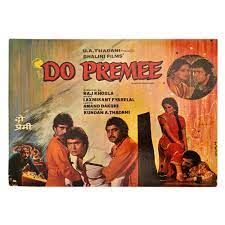In the digital age, online advertising has become a cornerstone of marketing strategies, with businesses leveraging platforms to promote their products and services. The concept of a 4 Rupee Click, often associated with online advertising, raises questions about the cost and effectiveness of pay-per-click (PPC) campaigns. In this article, we explore the dynamics of the 4 Rupee Click phenomenon and its implications for advertisers.
Understanding the 4 Rupee Click:
The 4 Rupee Click is a term that refers to the cost incurred by advertisers when a user clicks on their online ad. This metric is often associated with pay-per-click advertising models, where advertisers pay a fee each time a user clicks on their ad. The cost can vary widely based on factors such as the platform, industry, and targeting parameters.
- The Economics of PPC Advertising:
- Bidding System: Platforms like Google Ads operate on a bidding system, where advertisers compete for ad placements by bidding on keywords. The cost per click (CPC) is influenced by the competition for the chosen keywords.
- Targeting and Relevance: Advertisers can refine their targeting parameters to reach specific audiences. The relevance of the ad to the target audience affects the CPC, with more relevant ads often achieving lower costs.
- Factors Influencing 4 Rupee Click Rates:
- Industry Competition: Highly competitive industries may experience higher CPC rates as advertisers vie for visibility in crowded markets.
- Ad Quality and Relevance: Well-crafted, relevant ads with high click-through rates (CTR) may benefit from lower CPC rates.
- Geographic Targeting: Advertisers targeting specific regions may encounter varying CPC rates based on regional demand and competition.
- Effective Strategies for Cost-Effective Clicks:
- Keyword Research: Thorough keyword research helps advertisers identify relevant and cost-effective keywords to target in their campaigns.
- Quality Score Improvement: Platforms like Google Ads assign a Quality Score to ads based on factors like ad relevance, landing page quality, and CTR. Improving the Quality Score can lead to lower CPC rates.
- Ad Testing: A/B testing different ad creatives and copy can help identify the most effective combinations, potentially improving CTR and reducing CPC.
- Challenges and Considerations:
- Budget Management: Advertisers need to carefully manage their budgets to ensure a balance between visibility and cost-effectiveness.
- Click Fraud: The digital landscape is not immune to click fraud, where malicious entities generate fake clicks to drain advertising budgets. Vigilance and monitoring are essential to mitigate this risk.
- Measuring Campaign Success:
- Return on Investment (ROI): Advertisers should evaluate the success of their campaigns based on ROI rather than focusing solely on CPC. A higher CPC may be justified if it leads to a higher conversion rate and increased revenue.
Conclusion:
The 4 Rupee Click encapsulates the intricate world of online advertising, where costs are influenced by a multitude of factors. Advertisers must navigate this landscape strategically, focusing on relevance, quality, and effective budget management. While the cost per click is a crucial metric, it’s essential to view it within the broader context of campaign objectives and overall return on investment. As the digital advertising landscape continues to evolve, advertisers will need to adapt and refine their strategies to achieve optimal results in a competitive online marketplace.
Visit Here: https://trendtoreview.com/rupee-4-click/



